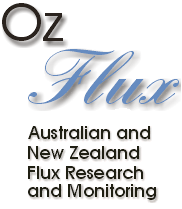Full description
The Samford flux station is situated on an improved (Paspalum dilatum) pasture in the humid subtropical climatic region of coastal south-east Queensland: 27?23?17? S, 152?52?40? E. Located only 20km from the centre of Brisbane city, Samford Valley provides an ideal case study to examine the impact of urbanisation and land use change on ecosystem processes. The valley covers an area of some 82km2 and is drained in the southern regions by the Samford creek, which extends some 13km to Samford Village and into the South Pine River. The Samford Valley is historically a rural area experiencing intense urbanisation, with the population increasing almost 50% in the 10 years to 2006 (Morton Bay Regional Council, 2011). Within the Samford valley study region, the Samford Ecological Research Facility (SERF) not only represents a microcosm of current and historical land uses in the valley, but provides a unique opportunity to intensively study various aspects of ecosystem health in a secure, integrated and long term research capacity. Mean annual minimum and maximum temperatures at a nearby Bureau of Meteorology site are 13.1?C and 25.6?C respectively while average rainfall is 1102mm. The station was installed in June 2010 and forms part of the TERN South East Qld Peri-urban Supersite. The Supersite was established around the Samford Ecological Research Facility (SERF), managed by the Queensland University of Technology (QUT) with the aim of investigating the influence of urban development on ecosystem functions. The SERF supersite is jointly funded by ACEAS-TERN and the QUT. Details of the site can be found at http://ozflux.org.au/monitoringsites/samford/index.html#intro.Data time period: 02 06 2010 to 01 07 2014
User Contributed Tags
Login to tag this record with meaningful keywords to make it easier to discover
- Handle : 102.100.100/14219

- Local : MONe0c7ee43-f0d0-415b-89d1-79813181eaa2


